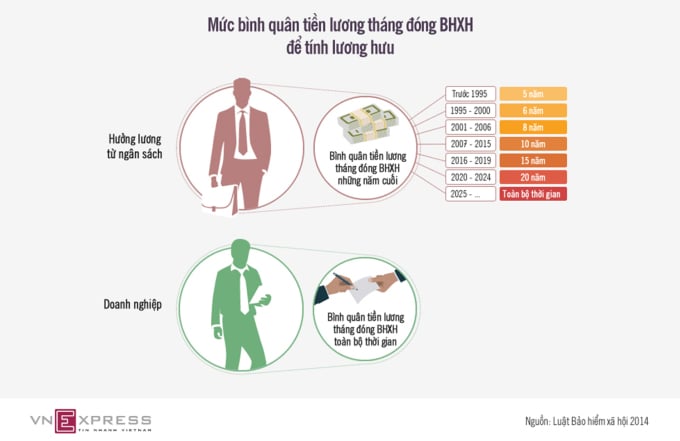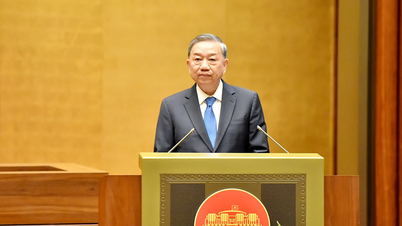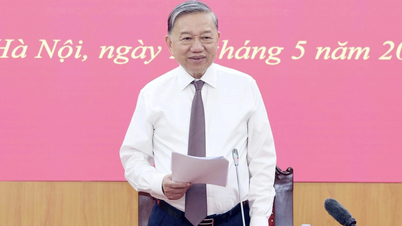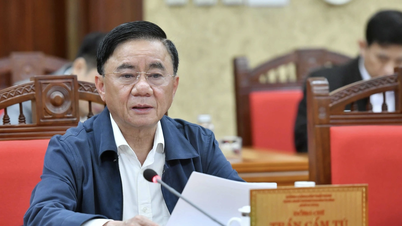Ho Chi Minh City Experts say that the way pensions are calculated between the state and private sectors is not fair but cannot be changed immediately due to historical factors.
According to current regulations, if a person works in the public sector, depending on the time they start participating in social insurance, their pension will be calculated based on the average of the last 5-10-20 years. Only those who start participating in social insurance from January 1, 2025, after reaching retirement age, will their pension be calculated based on the entire contribution period. Meanwhile, for workers in the private sector, their pension has always been calculated based on the entire participation period.
At a recent meeting with voters of the Ho Chi Minh City National Assembly Delegation, workers said that salaries increase based on seniority, so the calculation method for the state sector is more beneficial, and the amount received is also higher. To be fair, workers suggested that pensions for private sector workers should be calculated according to the same roadmap as the public sector.

Depending on the time of participation in social insurance, the pension of state officials and civil servants is calculated based on the last 5-20 years, while that of private sector workers is calculated based on the entire participation period. Graphics: Tien Thanh
Mr. Pham Minh Huan, former Deputy Minister of Labor, War Invalids and Social Affairs, said that the workers' opinions were correct, and that the way pensions were calculated between the two sectors was clearly unfair. The benefits for state employees are better than those of the private sector, but "cannot be fixed immediately."
"This difference is historical," said Mr. Huan. Before 1993, pension benefits were only available to state employees with the highest benefit level being up to 95% of the salary and allowances of the last month of work. The social insurance regime at this stage did not completely apply the contribution-benefit principle but was also the state's recognition of the working process of cadres, civil servants and public employees so that after they retired, they would receive pensions and allowances corresponding to their working time.
In 1993, when the Government issued Decree 43, officially expanding social insurance to all economic sectors, pensions were applied to the private sector, and the fund began to have contributions from businesses and employees. According to international standards, pensions must be based on the principle of contribution - enjoyment, that is, the entire contribution process is calculated.
"But how to deal with people in the public sector?" Mr. Huan asked. At that time, there was a lot of debate among policy makers about this calculation method. If the contribution-benefit principle was applied immediately, it would cause a big "shock", which could easily cause a wave of resignations in the public sector. Therefore, the calculation of pensions in this sector had to be adjusted gradually.

State officials and employees working at Thu Duc City People's Committee, August 2022. Photo: Quynh Tran
Mr. Cao Van Sang, former director of Ho Chi Minh City Social Insurance, also said that the way the state sector calculates pensions is not fair to the private sector, but "there is hardly a better way".
In 1993, when the state pension calculation method changed from being based on allowances and the last month's salary before retirement to the average of the last 5 years, people in the transition period also reacted and compared because they were at a disadvantage. "In that context, it was necessary to adjust according to the roadmap. It was like a pain reliever, so that people could gradually accept it," said Mr. Sang.
On the other hand, the former director of the Ho Chi Minh City Social Insurance said that it is necessary to look at the reality of the salaries of state employees strictly following the salary scale with a very low starting level. For example, at this time, a university graduate starting to work for the state will receive a salary of less than 3.5 million VND (coefficient 2.34 x base salary 1.49 million VND). Meanwhile, the minimum salary for unskilled, untrained workers in enterprises is 4.68 million VND. Salaries in the state sector cannot increase suddenly but must be adjusted once every three years.
In addition, in the private sector, wages are an agreement between the employee and the employer, operating according to the market mechanism. During the working life of an employee, there are periods when their wages are very high, from tens to hundreds of millions of VND per month, but there are also times when they are low. If the low wage falls during the period of near retirement, the pension received in the final years will be very disadvantageous. Therefore, the pension calculated as an average of the entire contribution period is reasonable.
"That is also the principle of calculating pensions in the world and the state sector also follows this roadmap, adhering to the contribution-benefit principle," said Mr. Sang. Especially when the public sector is gradually implementing salary reform according to Resolution 27, paying salaries according to job position.

Pou Yuen workers get off work in mid-October 2021. Photo: Thanh Nguyen
Mr. Tran Hai Nam, Deputy Director of the Social Insurance Department (Ministry of Labor, War Invalids and Social Affairs), said that the difference between the calculation of public and private sector pensions is gradually narrowing according to the roadmap stipulated in the Law on Social Insurance 2006 and 2014 when moving towards calculating the average of the entire contribution period. The pension of private sector employees may not be fair when compared with the public sector, but compared to the contribution to the social insurance fund, it is not at a disadvantage because it complies with the contribution-benefit principle.
Mr. Bui Sy Loi, former Vice Chairman of the National Assembly’s Committee on Social Affairs (now the National Assembly’s Committee on Social Affairs), said it is impossible to calculate pensions for private sector workers on the same roadmap as the public sector. In fact, the way pensions are calculated in the state sector is gradually changing to be in line with international principles.
However, to "reduce competition" between the two areas, in pension payments, it is necessary to take into account the principle of sharing between high-income and low-income pensioners. This is to avoid too large a gap between beneficiary groups, especially workers with low incomes.
Le Tuyet
Source link



































































































Comment (0)